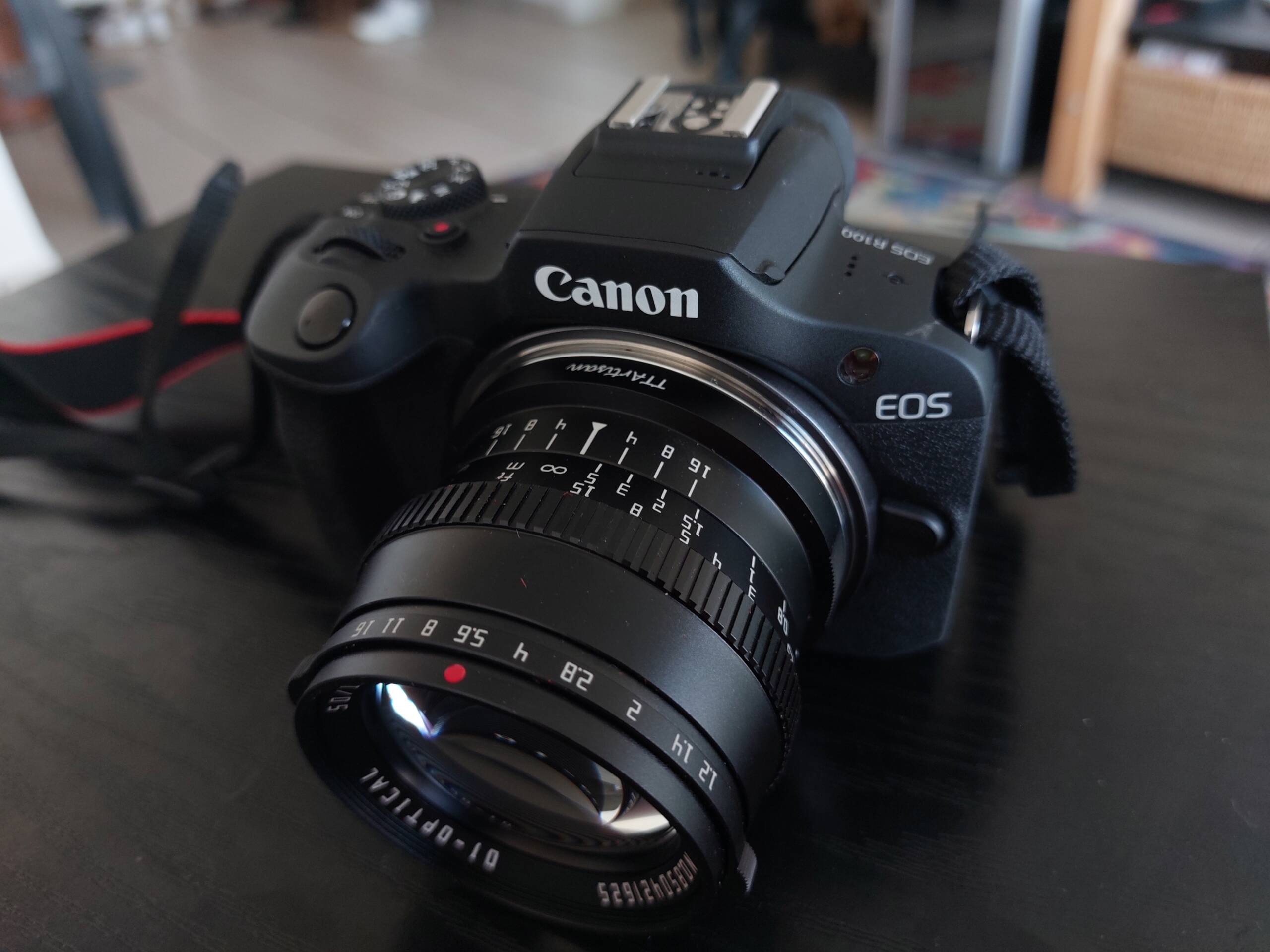The APS-C camera market is undergoing a significant transformation, driven by advancements in technology, strategic shifts by camera manufacturers, and the growing support of high-quality third-party lens makers. Once considered a stepping stone to full-frame systems, APS-C cameras are now emerging as legitimate professional tools, thanks to innovations in sensor technology, feature upgrades, and a more competitive ecosystem. This trend is reshaping the landscape of professional photography and creating new opportunities for photographers who value portability and performance.

Photo Credits: Budget Photography Powerhouse: Canon R100 and TTArtisan 50mm f/1.2 Lens Combo, Source: pho.tography.org
Recent developments indicate that manufacturers are repositioning APS-C cameras to compete in the professional segment. For instance, there are persistent rumors of Canon preparing to launch the RF7 Mark II, a flagship APS-C camera rumored to feature a stacked sensor. Such a sensor would allow for faster readout speeds, reducing rolling shutter and enabling enhanced burst rates and video performance. This type of innovation positions APS-C cameras as ideal for sports, wildlife, and event photography—fields where speed and portability are critical. Similarly, Sony and Fujifilm have been pushing the boundaries of APS-C with cameras like the Sony A6700 and Fujifilm X-H2, which pack features like high-resolution sensors, advanced autofocus, and even 8K video capabilities.
These innovations are closing the gap between APS-C and full-frame cameras, with manufacturers leveraging smaller sensors for greater affordability, compactness, and weight reduction while incorporating high-end features traditionally reserved for larger formats. Some APS-C models now include professional-grade autofocus systems, weather sealing, and exceptional dynamic range. Although some cameras, such as Canon’s R10, lack in-body image stabilization (IBIS), manufacturers are selectively adding features to differentiate models across price points. Meanwhile, flagship APS-C cameras with IBIS, stacked sensors, and advanced ergonomics are firmly positioning the format as a professional alternative.
The role of third-party lens manufacturers in this evolution cannot be overstated. Companies like Laowa, Viltrox, TTArtisan, 7Artisans, Meike, Samyang, and Kipon have elevated the APS-C ecosystem by producing high-quality lenses at accessible prices. These lenses fill critical gaps in proprietary lineups, offering photographers diverse options for portraiture, macro work, ultra-wide landscapes, and more. For example, Laowa’s ultra-wide zero-distortion lenses and Viltrox’s fast primes provide exceptional optical performance that rivals or even surpasses first-party lenses in some cases. The emergence of such third-party manufacturers has democratized access to professional-grade tools, making APS-C systems more versatile and appealing to a broader audience.
This diversification of the APS-C lens ecosystem is creating a feedback loop of innovation. Manufacturers are emboldened to produce more advanced cameras, knowing that third-party lens support will enhance their usability. Meanwhile, photographers, particularly those seeking value or creative flexibility, are increasingly drawn to APS-C systems that offer professional performance without the bulk and cost of full-frame setups. The result is a vibrant market segment that caters to professionals, enthusiasts, and hybrid shooters alike.
The repositioning of APS-C as a professional format is also changing the competitive dynamics of the camera industry. Sony, Fujifilm, and Canon are all vying for dominance, each leveraging unique strategies. Sony’s well-established E-mount ecosystem benefits from extensive third-party lens support, making it a strong contender for professionals. Fujifilm’s X-mount, with its distinctive film simulations and cohesive ecosystem, appeals to photographers seeking a unique shooting experience. Canon, by opening its RF mount to third-party manufacturers, is rapidly building an ecosystem that could rival Sony’s, particularly if rumors of a stacked-sensor APS-C flagship prove true.
This trend has broader implications for the photography market as a whole. As APS-C cameras become more capable, they challenge the traditional segmentation between consumer and professional tools. Genres like travel, wildlife, and street photography—where compact, lightweight gear is often preferred—are seeing an influx of APS-C cameras that deliver professional-grade results. This shift is also encouraging manufacturers to rethink their approach to full-frame cameras, which increasingly coexist with APS-C systems rather than completely overshadowing them.
The evolution of APS-C cameras is part of a larger democratization of photography tools. With advances in sensor technology, innovative features, and a thriving third-party lens ecosystem, APS-C cameras are breaking free from their historical constraints and stepping into the professional spotlight. This transformation is not just a reflection of technological progress but also a testament to the adaptability of the photography industry in meeting the diverse needs of modern creators. As APS-C systems continue to rise, they are proving that smaller sensors can still produce big results, heralding a new era of professional photography.